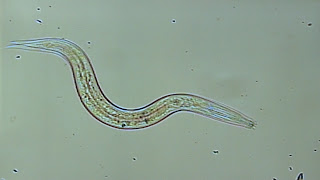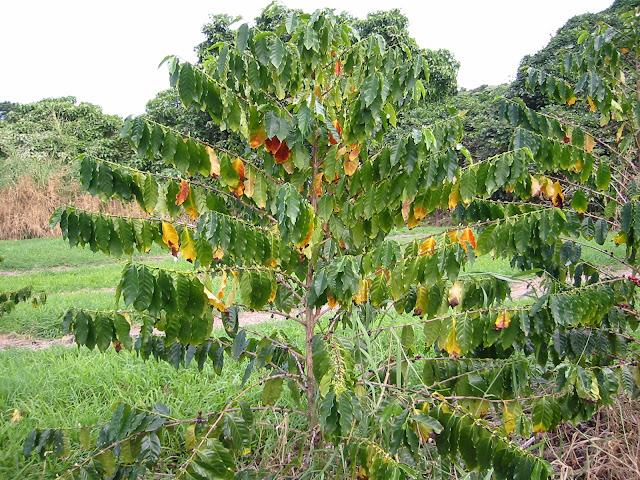
Episodes

Sunday Jul 03, 2022
What are Root Knot Nematodes on Real World Gardener
Sunday Jul 03, 2022
Sunday Jul 03, 2022
PLANT DOCTOR
Nematodes part 1: the backstory
Did you know that there are 1,000,000 species of nematodes that have been identified?
Nematodes live in our environment and although microscopic, unsurprisingly, are related to earthworms

If nematodes are on your plants the symptoms range from perhaps they’re just stunted and don’t seem to grow much, r like the coffee tree pictured, continually looks like it's wilting despite the watering it receives. Another symptom is yellowing of foliage.
- The majority of nematodes aren't plant or crop destructors.
However, the few that attack the cell walls of plants can cause serious damage from which the plant/crop usually doesn't recover.
- Then there's the problem of identifying what's going on with plants that are affected by nematodes.
- Have you ever had plants that seem to wilt despite you watering them religiously?
What they look like

Nematodes are a round worm but because they are unable to be seen by the naked eye, I would describe them as thread like with a large head and mouth.
Arm yourself with a magnifying glass and have a look at the roots of plants that you suspect have been attacked by nematodes. You should be able to see them then.
 |
| Coffee tree nematode |
If nematodes are on your plants the symptoms range from perhaps they’re just stunted and don’t seem to grow much, r like the coffee tree pictured, continually looks like it's wilting despite the watering it receives. Another symptom is yellowing of foliage.
Once the plant has been dug up, nodules on roots will be evident. However, other factors create nodules on roots as in nitrogen fixing plants such as plants in the Fabaceae family.
What could be the problem? Wilting symptoms can be attributed to a range of other factors.
So let’s find out by listening to the podcast
Your host of Real World Gardener, Marianne is talking with Steve McGrane, agriculturist and horticulturist.
Next week we tackle the many, many ways you have to control the bad nematode, namely root knot nematodes.
If you have any questions you can email us Realworldgardener@gmail.com or write in to 2rrr, PO Box 644 Gladesville NSW 1675.
So let’s find out by listening to the podcast
Your host of Real World Gardener, Marianne is talking with Steve McGrane, agriculturist and horticulturist.
Next week we tackle the many, many ways you have to control the bad nematode, namely root knot nematodes.
If you have any questions you can email us Realworldgardener@gmail.com or write in to 2rrr, PO Box 644 Gladesville NSW 1675.
Version: 20241125
